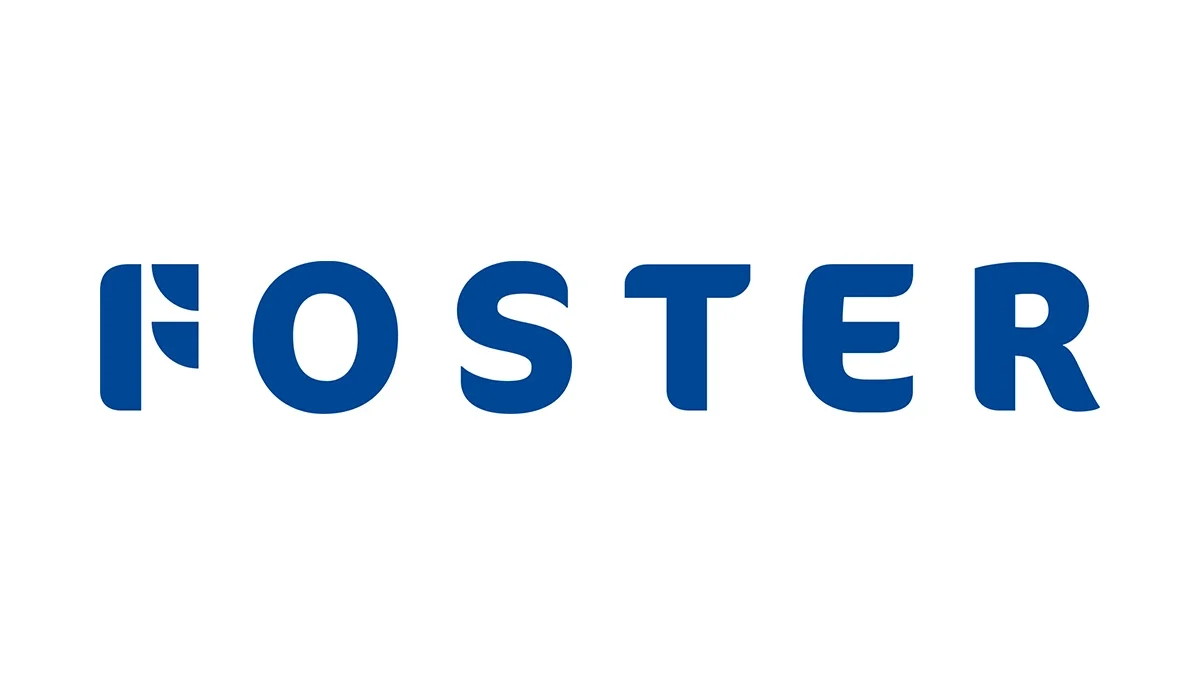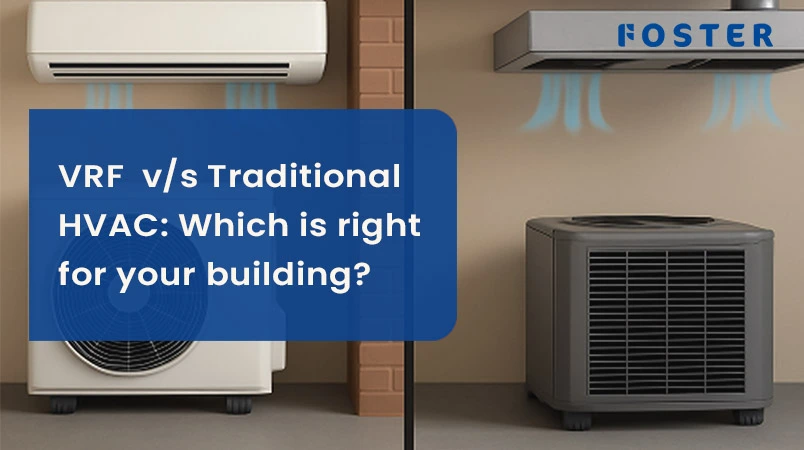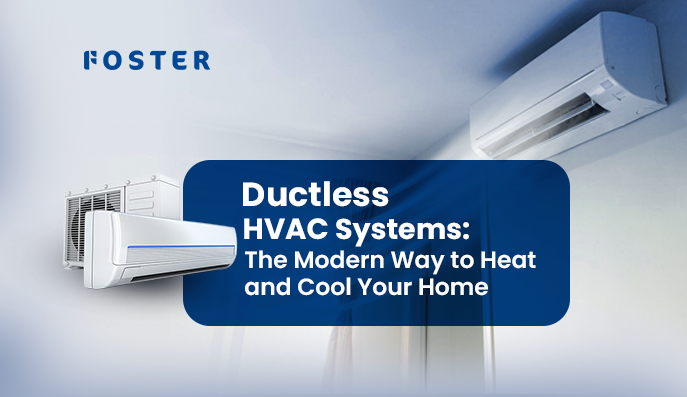With escalating temperatures and increasingly stringent energy regulations, the UAE and GCC region are experiencing unprecedented demand for intelligent, energy-efficient climate control solutions. The selection of an appropriate HVAC system is crucial for ensuring long-term performance and maximizing return on investment, whether for Dubai’s towering skyscrapers, Abu Dhabi’s diverse developments, or Riyadh’s expansive healthcare complexes. In 2025, the central consideration often revolves around the choice between VRF and traditional HVAC systems. This decision significantly impacts energy usage, space allocation, comfort management, and continuous upkeep. Given current priorities in energy efficiency, flexible zoning, and sustainable construction, a comprehensive understanding of how Variable Refrigerant Flow (VRF) systems differ from conventional HVAC technologies is essential for making sound investment choices.
This guide breaks down the differences, benefits, costs, and best-use scenarios to help you choose the right cooling system for your building.
What is VRF and How Does It Work?
VRF (Variable Refrigerant Flow) technology marks a significant leap forward in climate control. It revolutionizes how buildings achieve thermal comfort by moving beyond the simple on/off operation of conventional systems. VRF systems employ advanced inverter-driven compressors that constantly modify refrigerant flow, adapting to the precise thermal demands of each individual zone within a building.
How It Works:
A VRF system uses an inverter-driven compressor to regulate the flow of refrigerant based on each zone’s cooling or heating demand. This allows precise, energy-efficient climate control for multiple zones simultaneously. Since it uses minimal or no ductwork, VRF is ideal for large buildings needing flexible, quiet, and space-saving HVAC solutions.To understand the complete technical details, read our comprehensive guide on how VRF systems work.
Key Benefits of VRF:
- Ductless or low-duct setup saves space.
- Energy savings of up to 30–40% compared to conventional systems.
- Excellent for large buildings, multi-floor offices, hospitals, luxury villas, and hotels.
- Enables simultaneous heating and cooling in different zones (in heat recovery models).
What is a Traditional HVAC System?
Traditional HVAC systems typically include centralized chillers or boilers that supply air through a network of ducts to multiple rooms or zones.
Traditional HVAC system types encompass several proven configurations:
- Central air conditioning systems utilizing single outdoor units connected to indoor air handlers via comprehensive ductwork
- Ducted split units combining outdoor condensing units with indoor evaporator coils
- Packaged units housing all system components in single outdoor cabinets
Key Characteristics:
- Operate in on/off cycles, which may lead to energy waste.
- Zoning is limited—a single thermostat often controls multiple rooms.
- Require substantial ductwork and mechanical space.
- Best suited for large open areas and buildings with existing duct infrastructure.
VRF vs Traditional HVAC: Key Differences
When considering climate control solutions, Variable Refrigerant Flow (VRF) systems and traditional Heating, Ventilation, and Air Conditioning (HVAC) units present distinct advantages and disadvantages. This comparison highlights key differences across several critical aspects.
- Design and Ductwork:
VRF systems boast a streamlined design, utilizing compact refrigerant piping and often employing ductless or low-duct indoor units. This allows for remarkable installation flexibility, making them ideal for retrofitting older buildings or those with limited ceiling space. In contrast, traditional HVAC systems rely on extensive, large ductwork networks, demanding significant spatial allocation and potentially increasing construction expenses.
- Zoning and Personalized Comfort:
A defining feature of VRF technology is its superior independent zone control. Each indoor unit can be operated autonomously, providing individualized temperature settings for diverse spaces such as offices, hotel rooms, or residential villas. Traditional HVAC systems, in contrast, typically employ a single thermostat to manage large zones, leading to restricted zoning flexibility and potential energy waste due to over-cooling or over-heating unoccupied areas.
- Energy Efficiency:
VRF systems are engineered for optimal energy consumption, featuring inverter-driven compressors that precisely regulate refrigerant flow based on the real-time cooling or heating demands of each zone. This results in significant energy savings, particularly under partial-load conditions. Conversely, traditional HVAC systems often utilize fixed-speed compressors that cycle on and off frequently, leading to higher energy consumption and increased wear and tear over time.
- Installation and Space Utilization:
The absence of bulky ductwork and large mechanical rooms makes VRF systems considerably easier to install (see how to install VRF systems), especially in confined spaces or historic buildings. Their modular design also facilitates phased installations. Traditional HVAC systems, however, often necessitate dedicated mechanical rooms, extensive ducting, and more substantial spatial allowances, rendering them less suitable for compact structures.
- Maintenance and Longevity:
VRF systems generally require less maintenance due to fewer moving parts and the absence of ducts. Routine upkeep primarily involves checks on electronic controls and refrigerant levels. However, like any HVAC system, they can still face performance issues—learn more in our guide on common VRF HVAC problems. Traditional HVAC systems, by comparison, demand more frequent and comprehensive maintenance, including regular duct cleaning, component replacements, and filter changes, which can lead to higher long-term servicing costs.
VRF vs HVAC Cost Comparison
- Initial Installation Cost
VRF systems cost more upfront, typically AED 14,500–29,000 per ton, due to advanced technology and installation. Traditional HVAC systems are cheaper initially, around AED 11,000–22,000 per ton, making them appealing for budget-conscious projects.
However, VRF systems offer better long-term savings through reduced energy bills—an important factor with rising electricity costs in cities like Dubai and Abu Dhabi. Over time, the energy efficiency of VRF can offset its higher initial cost, especially in high-use buildings.
- Operational Cost
Thanks to their energy-efficient variable-speed compressors and zoning capabilities, VRF systems can reduce energy usage by 15% to 42%, depending on the building’s design and occupancy patterns. This results in significant savings on electricity bills. Traditional systems consume more power due to their fixed-speed operation, especially during off-peak load conditions, increasing monthly utility costs over time. - Maintenance Costs
VRF systems generally require less maintenance. They avoid the need for duct cleaning and have modular components that are easier to service or replace. Traditional HVAC systems, on the other hand, involve more frequent maintenance, including ductwork inspections, mechanical part replacements, and multiple filter changes throughout the year.
When to Choose VRF Over Traditional HVAC
Opt for VRF when your project demands:
- Buildings with Diverse Temperature Needs
VRF systems are ideal for commercial offices, hotels, and medical facilities. They provide independent temperature control for different rooms or zones, optimizing comfort and minimizing energy waste.
- Space-Constrained Projects
For buildings with limited ceiling space, such as older structures, luxury villas, or renovations, VRF offers a ductless or low-duct solution. This saves space and simplifies construction.
- Sustainable and Energy-Efficient Designs
VRF systems are an excellent choice for projects seeking green certifications like LEED or BREEAM. . Their energy-efficient operation and minimal refrigerant loss contribute to sustainable construction and reduced environmental impact.
- Retrofitting Existing or Heritage Buildings
VRF is perfect for upgrading older properties, requiring minimal structural modifications. It allows for HVAC upgrades without compromising original architecture, making it suitable for heritage buildings.
- Mixed-Use or Multi-Function Buildings
In complexes with varied spaces like retail, offices, and residences operating on different schedules, VRF provides flexible and independent zone control. This enhances climate management and system responsiveness.
When to Stick with Traditional HVAC
Traditional systems are still viable for:
- Large Open Spaces
Best for warehouses, malls, and factories needing uniform cooling across wide areas. - Lower Initial Budget
Traditional HVAC is more affordable upfront, making it ideal for cost-sensitive projects. - Existing Ductwork
If usable ductwork already exists, upgrading traditional units is often simpler and cheaper than switching to VRF. - High Ventilation Needs
Traditional systems are better suited for buildings like labs or industrial facilities that require large amounts of fresh air, as outlined by ASHRAE ventilation standards.
Use Cases and Applications
VRF (Variable Refrigerant Flow) systems are particularly well-suited for a variety of commercial HVAC applications, including:
- Corporate offices: Ideal for individual workspace temperature control and maximizing energy efficiency.
- Luxury residential developments: Offers personalized room-by-room comfort.
- Healthcare facilities: Provides precise temperature and humidity control across different zones.
- Mixed-use buildings: Adaptable to diverse occupancy patterns and varying operational schedules.
Conversely, traditional HVAC applications remain the preferred choice for:
- Warehouses and distribution centers: Effective for large, open floor plans.
- Shopping malls: Ensures uniform comfort across extensive retail spaces.
- Educational institutions: Suitable for classroom blocks with consistent occupancy.
- Sports facilities and convention centers: Optimized for large assembly areas.
Ultimately, selecting the appropriate system hinges on specific building climate control needs, operational characteristics, and long-term facility management objectives.
Expert Insights & Industry Trends (2025)
The MENA region is witnessing a surge in VRF adoption, driven by:
- Government mandates on energy efficiency
- Rising electricity costs across the UAE and Saudi Arabia
- Sustainability targets for Vision 2030 (KSA) and UAE Net Zero 2050
- Increasing preference for modular, future-ready HVAC systems
According to the International Energy Agency’s Global Cooling Demand Outlook, the demand for efficient cooling solutions in hot climates like the Middle East is expected to triple by 2050, making system efficiency crucial for sustainable development.
The UAE Green Building Council also emphasizes the importance of energy-efficient HVAC systems in achieving national sustainability goals.
Expert Recommendations and Best Practices
A. Selection Guidelines
- Assess the building layout and usage zones.
- Conduct energy load analysis.
- Evaluate your budget vs long-term savings potential.
- Consult experienced HVAC engineers for recommendations.
B. Implementation Tips
- Choose certified HVAC contractors with VRF system experience.
- Prioritize flexible piping layouts and integration planning.
- Account for future scalability in your HVAC design.
- Follow manufacturer guidelines from leading heat pump manufacturers
Conclusion and Key Takeaways
Choosing between VRF and traditional HVAC systems hinges on your building’s specific requirements, including operational needs, available space, energy targets, and financial considerations. VRF systems offer superior efficiency and flexibility, making them ideal for projects demanding multi-zone control or sustainable design. Conversely, traditional HVAC systems remain a reliable option for expansive, uniform areas or when integrating with existing ductwork and a restricted budget.
To guarantee the optimal choice for your facility, it is crucial to seek advice from seasoned HVAC professionals.
Looking to install or upgrade your building’s climate control system?
Contact Foster International for expert consultation and customized HVAC solutions across the UAE and GCC. We specialize in advanced cooling technologies, including VRF systems and traditional setups, backed by years of industry expertise. Our comprehensive approach includes HVAC equipment solutions, professional HVAC services, and ongoing support to maximize your system’s performance and longevity.



 Previous Post
Previous Post

